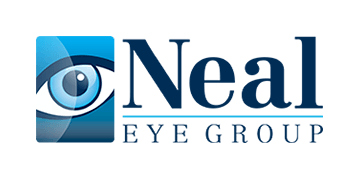What Are Scleral Contact Lenses?
Scleral contact lenses are a specialized type of contact lens designed to provide vision correction and comfort for patients with irregular corneas or severe dry eye conditions. Unlike typical contact lenses that rest on the cornea, scleral lenses are larger and vault over the corneal surface, resting on the white part of the eye, known as the sclera. This unique design offers several benefits for individuals with challenging ocular conditions.
Design and Function of Scleral Lenses
Scleral lenses are larger than traditional soft or rigid gas-permeable contact lenses. Typically, they range from 14 to 24 millimeters in diameter. Their size allows them to create a fluid reservoir between the back surface of the lens and the cornea. This reservoir remains filled with sterile saline solution while the lens is worn, which serves to continuously hydrate the cornea.
By vaulting over the cornea without making direct contact, scleral lenses avoid irritating damaged or irregular corneal surfaces. The landing on the sclera provides a stable fit, minimizing lens movement and enhancing comfort.
Conditions Treated with Scleral Lenses
Scleral lenses are commonly prescribed to patients with keratoconus, a degenerative corneal disorder characterized by thinning and cone-shaped protrusion of the cornea. The irregular shape impairs vision with conventional lenses, while scleral lenses provide a smooth optical surface to improve clarity.
They also benefit individuals with corneal scars, post-surgical corneas, pellucid marginal degeneration, and other corneal ectatic disorders.
Patients with severe dry eye disease, including those with Sjögren’s syndrome or ocular graft-versus-host disease, find scleral lenses effective because the fluid reservoir protects and moisturizes the ocular surface, reducing dryness and discomfort.
Advantages Over Traditional Contacts
Scleral lenses address problems that standard soft or rigid lenses cannot. By resting on the less sensitive sclera rather than the cornea, they reduce irritation and provide better tolerance.
The fluid reservoir cushions the cornea, promoting healing of damaged tissues and offering relief for severe dryness.
The larger diameter ensures improved lens stability and reduces the risk of dislocation during blinking or eyelid movement.
Vision is often clearer with scleral lenses in cases with irregular corneas due to the uniform refractive surface they create.
Fitting Process
Fitting scleral lenses is more complex than fitting typical contacts and requires specialized training. Eye care professionals use detailed measurements of the eye shape, often aided by corneal topography and ocular coherence tomography to select the appropriate lens.
Because of their customized design, scleral lenses are usually ordered from specialized laboratories. The fitting process includes several trial lenses and adjustments to optimize comfort, vision, and fit.
Scleral lens patients require guidance on proper insertion, removal, and cleaning of these lenses to ensure safety and success.
Wearing and Care Instructions
Scleral lenses require careful handling to avoid contamination. Patients should wash and dry their hands thoroughly before insertion or removal.
The lenses must be filled with sterile saline solution before application to maintain the protective fluid layer over the cornea.
Cleaning and disinfecting the lenses with recommended products maintain hygiene and extend lens life.
Regular follow-up appointments help monitor eye health and lens fit while addressing any concerns.
Potential Challenges and Considerations
Scleral lenses have a higher initial cost and longer fitting time compared to regular contacts. Patients may require practice and patience to master insertion and removal due to their size.
Some individuals experience mild fogging of the fluid reservoir due to tear film proteins or debris, which can be managed with special cleaning or lubricating drops.
Not all patients are candidates; healthy eyelids and suitable ocular surface anatomy are essential for successful wear.

0 Comments